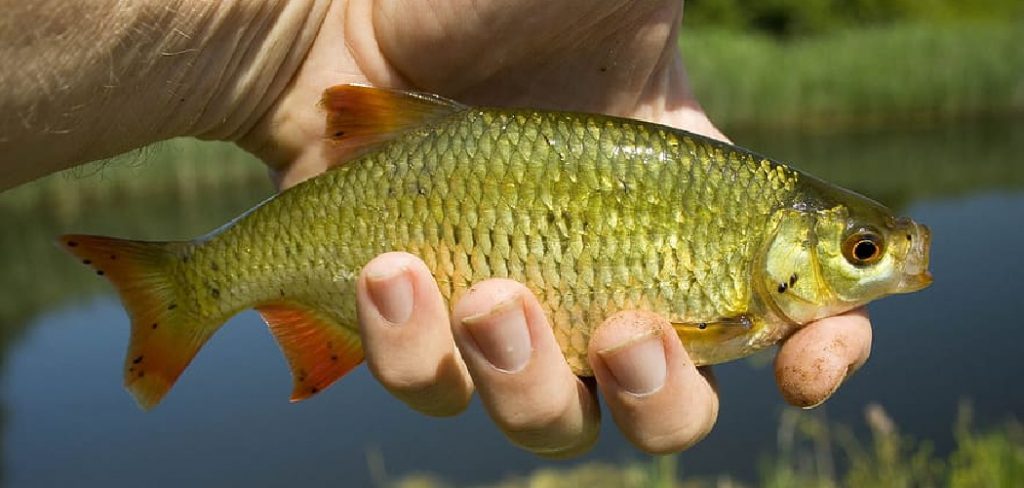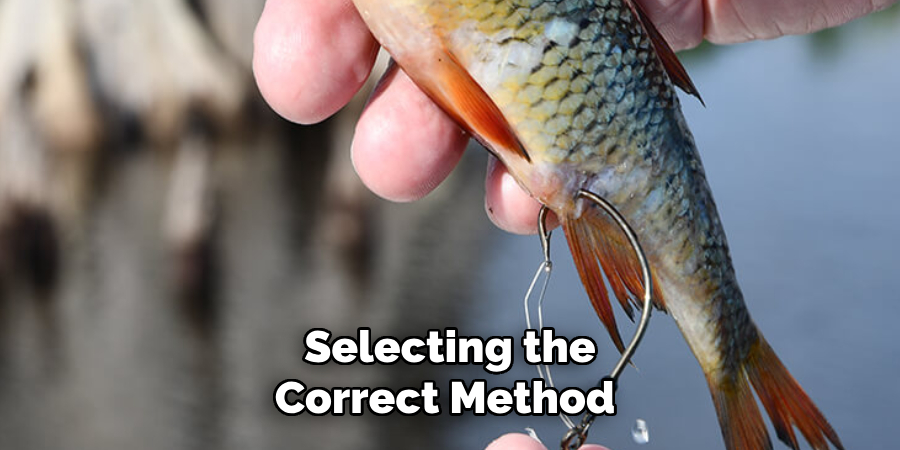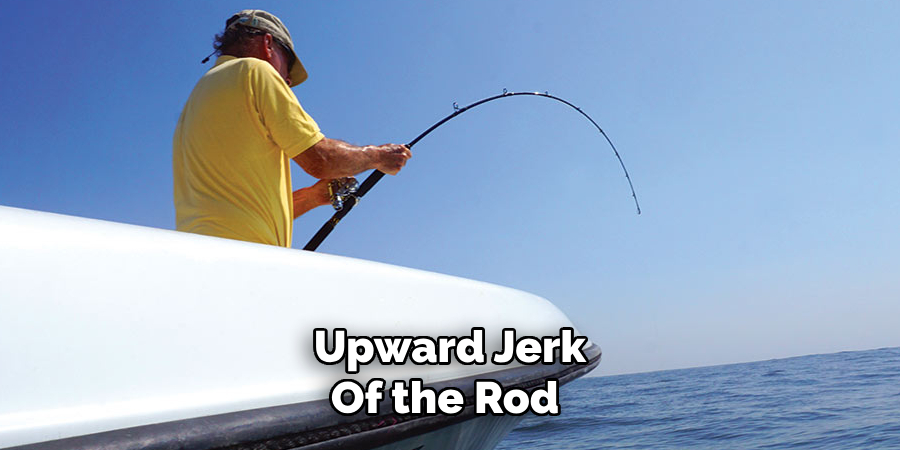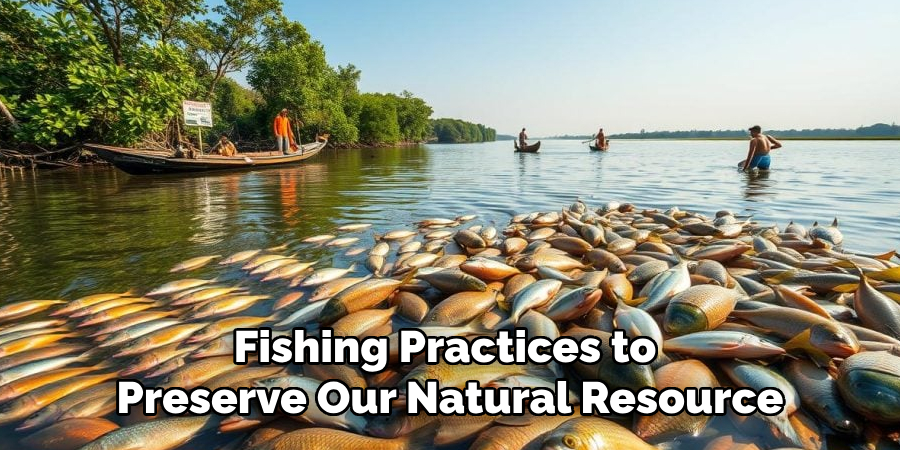Are you ready to try your hand at fishing with live bait? One of the most compelling live bait for catching a variety of fish is the shiner.
How to hook a live shiner is an essential skill for anglers who want to maximize their chances of landing big fish, particularly bass and other predatory species. Live shiners are one of the most effective forms of live bait, as their natural movement and scent easily attract fish. To correctly hook a shiner, it’s essential to consider the type of fishing, the target species, and the presentation method.

Proper technique ensures the shiner stays alive and active longer and improves the effectiveness of your bait in enticing a strike.
What Will You Need?
Before you can hook a live shiner, you’ll need to gather the necessary equipment and bait:
- Fishing Rod: Use a medium to heavy-action fishing rod suitable for the size of your target fish.
- Fishing Line: A 10-20 pound test monofilament or fluorocarbon line is ideal for most live bait situations.
- Hooks: Use sharp hooks in sizes ranging from #6 to #2, depending on the size of the shiner and target species.
- Bobber/Float (Optional): If fishing with a bobber, use one that matches the weight of your bait and adjusts to water depth.
- Split Shots (Optional): Divided shots can add weight and help keep the bait at the desired depth if not using a bobber.
- Live Shiners: Purchase live shiners from a bait shop or catch your own using a cast net or minnow trap. Make sure they are lively and healthy before hooking them.
Once you have all of your equipment and live bait, it’s time to hook the shiner properly.
9 Easy Steps on How to Hook a Live Shiner
Step 1. Choose the Right Hooking Method:
Several hooking methods are depending on your fishing technique, target fish, and water conditions. The primary methods include hooking through the lips, dorsal fin, or tail. Selecting the correct method ensures the shiner stays lively and swims naturally, increasing your chances of attracting fish.

- Through the Lips: This method is ideal for slow-trolling or drifting as it allows the shiner to swim freely and naturally in the water. Insert the hook from the bottom lip through the top lip to ensure it stays secure. Avoid piercing too far back into the mouth to prevent injury that might kill the bait.
- Through the Dorsal Fin: Hooking through the dorsal fin is great for stationary or under-a-bobber fishing. Carefully insert the hook below the skin near the dorsal fin, ensuring you avoid vital organs. This method allows the shiner to move freely and stay active.
- Through the Tail: Hooking it through the tail is effective if you need the bait to swim downward or away from cover. Insert the hook just above the tail fin, avoiding the spine. This setup encourages the shiner to swim erratically, drawing the attention of predatory fish.
By choosing the appropriate hooking method and handling the shiner carefully, you can maximize its movement and longevity, making it an irresistible target for your catch.
Step 2. Adjust the Depth:
To effectively adjust the depth at which your bait is presented, it’s crucial to understand the behavior of the fish you target and the structure of the water you’re fishing in. Using a slip bobber is a versatile method that allows you to easily set your bait at precise depths. Throw the line through the bobber, tie on a hook, and add an appropriately sized sinker to ensure the bait stays at the desired depth. For deeper waters, consider using a bottom rig with a weight to anchor your bait near where fish are likely to feed. Monitor water temperature, clarity, and vegetation, as these factors can influence fish activity and their preferred feeding zones.
Step 3. Add Additional Attraction:
To further enhance the appeal of your live shiner, consider adding additional attractants to draw in fish from greater distances. One effective method is to use scent attractants specifically designed for your target species. These can be applied to the bait itself or the surrounding area to amplify the shiner’s natural scent.
Another option is to add a small, colorful spinner blade above the hook to create flashes of light underwater, mimicking the movement of struggling prey and catching the attention of predatory fish. Incorporating a lighted bobber or glow beads near the bait can also increase visibility when fishing in murky or dark waters. Experiment with these techniques to find what works best for the fish in your area, and always remember to match your attractants to the conditions and target species for optimal results.

Step 4. Check Your Line:
Regularly checking your line is essential to ensure a smooth fishing experience and improve your chances of landing a catch. Start by inspecting the line for any signs of wear or damage, such as fraying, kinks, or weak spots.
The damaged line can compromise its strength and durability, potentially causing it to break during a crucial moment. Also, check that your knots are secure and properly tied to prevent losing your bait, lure, or fish. If you’re using a reel, ensure the line is feeding smoothly without tangles or twists, as this can affect your casting distance and accuracy. Lastly, keep your line taut and responsive while fishing, as a slack line can make it difficult to detect subtle bites or movements.
Step 5. Check Your Line Regularly
While fishing with live shiners, checking your line periodically is essential to ensure everything is functioning correctly. Strong currents, vegetation, or fish nibbling on your bait can all impact the presentation of the shiner.
Reel in your line slowly every so often to inspect the bait’s condition and ensure the shiner is still lively and securely hooked. A healthy, active shiner is much more likely to attract a bite. If the bait appears lethargic or has been damaged, replace it with a fresh one to maintain optimal effectiveness. Additionally, verify that your line is free from tangles, knots, or debris, as these can impede bait movement and reduce your chances of making a successful catch.
Step 6. Set the Hook
When you notice a bite, setting the hook properly is critical to securing your catch. Start by observing your bobber or feeling for a tug on the line. If you’re confident that a fish has taken the bait, give a firm, upward jerk of the rod to embed the hook in the fish’s mouth. Be careful not to yank the rod too hard, as this may tear the hook free or break the line. If you miss the hookset, check the condition of your shiner and reposition it if necessary before casting again. Proper timing and hook setting are key to converting bites into successful catches.

Step 7. Reel in Your Catch
Once the fish is hooked, begin reeling it in steadily and gently. Avoid jerky motions to prevent the line from snapping or the hook from pulling loose. Keep your rod tip up and maintain tension on the line throughout the process. If the fish makes a strong run or fights back, allow it to tire itself out by loosening your drag slightly and giving it room to move. Once the fish starts to tire, guide it toward you and prepare to land it using a net or by carefully lifting it from the water. Handling the process carefully will help ensure a successful catch without unnecessarily stressing or harming the fish.
Step 8. Handle the Fish Properly
Proper fish handling not only ensures the safety of the catch but also preserves the fish’s health if you plan to practice catch and release. Use wet hands or a damp towel when handling the fish to protect its slime coating, which plays a vital role in disease prevention. If the hook is deeply embedded, use pliers or a hook remover to extract it safely. Minimize the time the fish is out of the water to reduce stress. For those planning to keep their catch, store it on ice or in a live well to maintain freshness until it’s ready for cleaning.
Step 9. Enjoy Your Catch
With these tips for fishing with live shiners, you’ll increase your chances of a successful day on the water and bring home some tasty dinner. Remember always to follow local regulations and practice ethical fishing practices to preserve our natural resources for future generations to enjoy. Whether you’re a beginner or a seasoned angler, experimenting with different techniques and staying patient is all part of the fun in mastering the art of fishing with live bait.

By following these steps and continuously learning and adapting to your specific fishing environment, you’ll be sure to have an enjoyable and successful experience with live shiner bait.
Conclusion
How to hook a live shiner effectively requires patience, precision, and care to ensure the bait remains lively and appealing to the target fish.
By selecting the proper hooking method, using appropriate gear, and considering the environment and fish behavior, anglers can maximize their chances of a successful catch. Always handle the shiner carefully to maintain its vitality, as a lively bait is more likely to attract fish.
With practice and attention to detail, fishing with live shiners can become an advantageous and fruitful technique for anglers of all skill levels.
About the Author
Jennifer Branett is the author of Fishy Kayak and an expert in fish-related fields, with over 10 years of experience. Her work blends passion for fishing with a commitment to conservation.
Educational Background
Degree: Bachelor’s in Marine Biology
Institution: University of California, Santa Barbara
Specializations: Aquatic ecosystems, fish behavior, and sustainable practices
Professional Experience
Conservation Projects:
Collaborated with local organizations to restore aquatic habitats
Developed educational programs on sustainable fishing practices
Publications:
Authored articles for fishing magazines and environmental journals
Featured speaker at fishing expos and conservation conferences
Key Areas of Expertise
Fishing Techniques:
Kayak fishing strategies
Freshwater and saltwater fishing methods
Environmental Stewardship:
Advocacy for sustainable fishing
Promoting biodiversity in aquatic environments
Awards and Recognition
Recipient of the [Specific Award Name] for contributions to marine conservation
Recognized as a leading voice in the fishing community by [Organization/Publication Name]
Community Engagement
Workshops and Seminars:
Regularly hosts events to educate anglers on sustainable practices
Engages with youth programs to inspire the next generation of fishers
Online Presence:
Maintains an active blog sharing tips, stories, and conservation efforts
Engages with followers on social media to promote fishing ethics
Personal Interests
Enjoys kayaking in scenic locations
Passionate about photography, capturing the beauty of nature
Advocates for local conservation efforts in her community
